Poena cullei or "execution in a bag": the most severe Roman punishment
By Pictolic https://pictolic.com/article/poena-cullei-or-execution-in-a-bag-the-most-severe-roman-punishment.htmlBurial alive, hanging, quartering, crucifixion… What kind of tortures were not invented by people to punish criminals and objectionable. The Romans were particularly resourceful in this area – their tortures were always distinguished by a certain theatricality.
They wanted not just to teach a person a lesson, but also to demonstrate to others what would happen if someone dared to disobey. And not just to show, but to make potential criminals feel the full range of emotions that the criminal experienced in the last minutes of execution. Plus, to add a special meaning to this action.
So there was a punishment called Poena cullei or "execution in a bag".
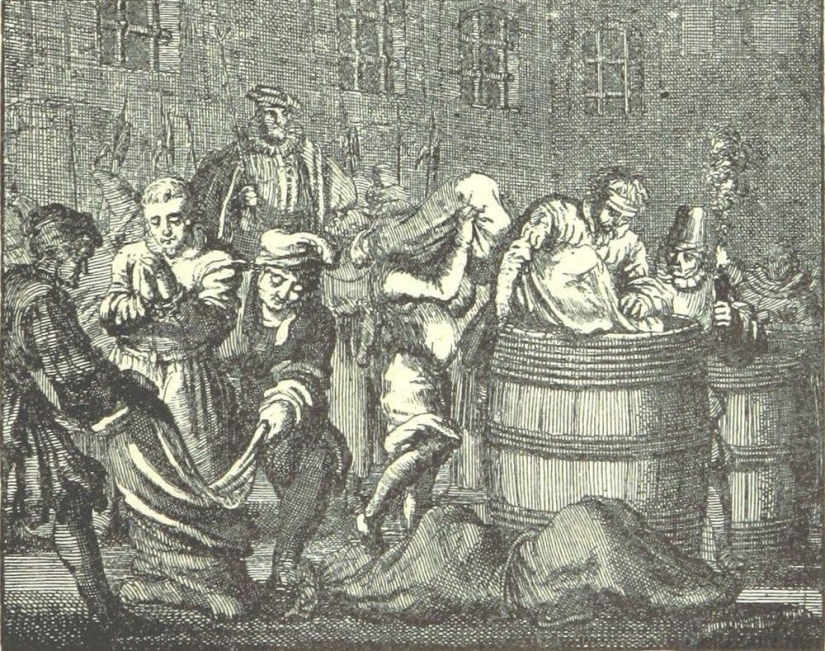
Poena cullei is a type of death penalty, during which the criminal was sewn alive into a bag with various animals (snakes, dogs, monkeys or roosters), and then thrown into the water. Thus, they were executed for the murder of a relative, in particular, the father. But there is evidence that this punishment was also subjected to blasphemers – people who insulted God or showed disrespect for the Christian faith. Later, poena cullei began to extend to child murderers.
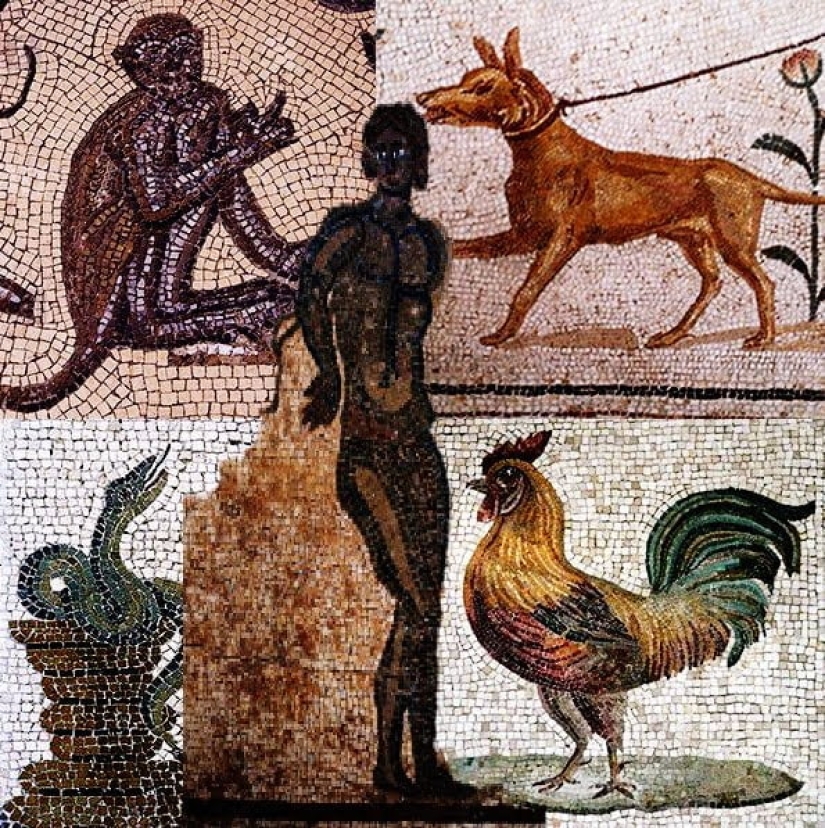
There was a certain sacred and symbolic implication in the execution – the violator of the law, who was subjected to poena cullei, was likened to animals that were in a bag with him. The dog meant that the criminal did not treat his parents with due respect, since in the first days of his life the dog is blind. In addition, for the Romans, it was a despicable animal, the embodiment of rage and cruelty. The monkey symbolized the criminal, his lack of the right to be called "man". The rooster symbolized the crime itself. Among the Romans, the rooster was the embodiment of ferocity and violence towards parents. And the snake symbolized the grief of the parents of the executed.
It is important to note that the Roman family was the main unit of society. It united not only blood children and parents, but also adopted children, and even servants. The head of the patriarchal family was the Pater familias. He had absolute, unconditional power over all its members and could dispose of their lives as He wanted.
The murder of Pater familias was regarded as a most cruel, brutal crime. Lex duodecim tabularum ("The Laws of the Twelve Tables") defined it as the voluntary murder of parents by children.
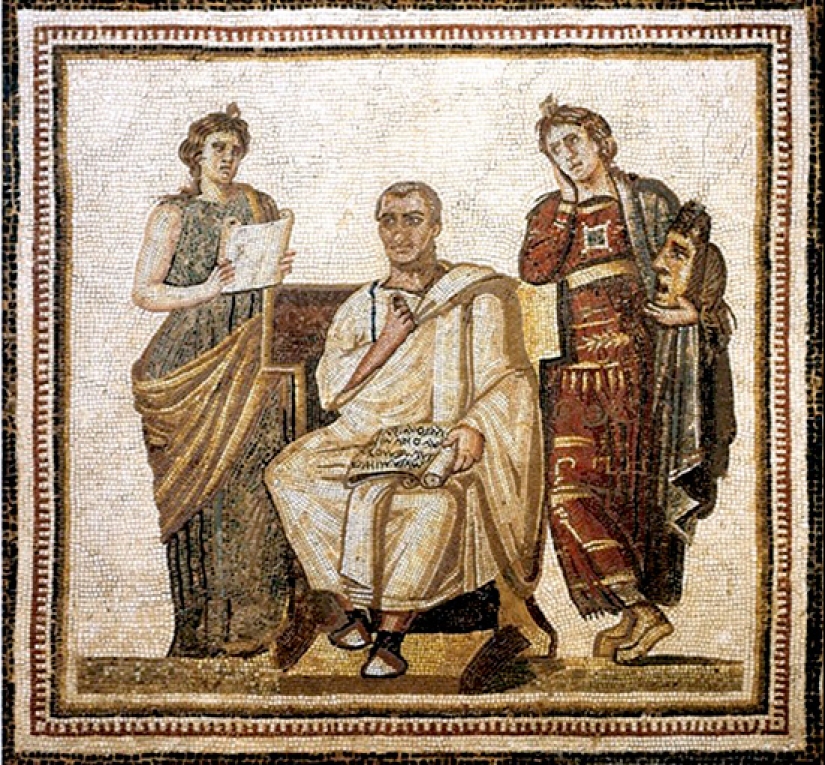
Over time, this section of the law was expanded, and other relatives were added to the list of potentially responsible people, in addition to children. After a while, the list of potential victims was also replenished: in addition to blood parents, it included foster mothers and fathers, grandparents, brothers and sisters, uncles, spouses, cousins, sons-in-law and daughters-in-law, foster children and even employers.
For the murder of any person from this list, the criminal was subjected to poena cullei. If the crime went beyond these categories, the murderer was tried in accordance with the law Lex Cornelia de sicariis et veneficiis and punished with exile.
The crimes were dealt with. Now let's find out how the punishment itself arose. There is an assumption that its origins go back to the reign of Lucius Tarquinius the Great – the last, seventh king of Ancient Rome. The consul and military commander Marcus Atilius Regulus was ordered to guard the sacred "Books of the Sibyls", which contained the prophecies uttered by the Sibyls. But he disobeyed and revealed the contents of the books, for which he was thrown into the sea with a sewn bag.
According to the historian Dionysius of Halicarnassus, earlier Marcus Atilius Regulus was also accused of parricide.
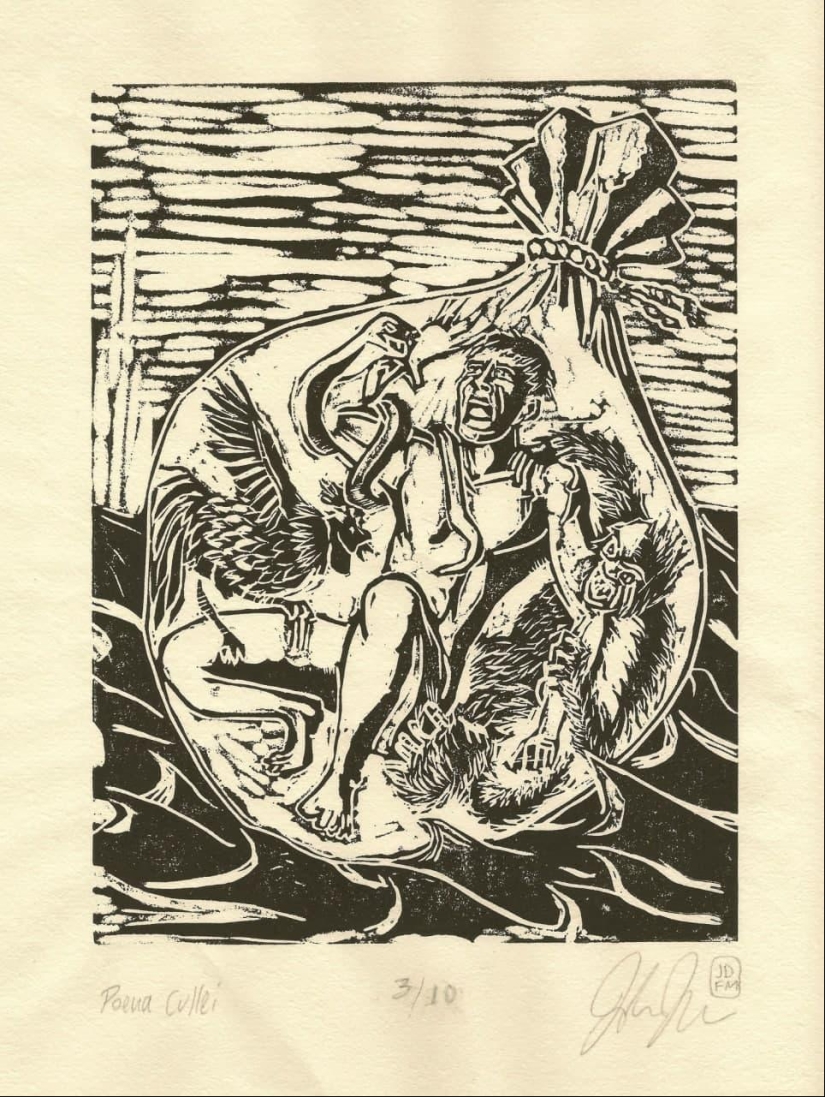
A similar punishment was inflicted around 100 BC by Marcus Publicius Malleolus for the murder of his mother. He was also placed in a bag and thrown "into a stream of water". But none of the sources mention that there were animals in the bag with him. Most likely, this "supplement" appeared during the first imperial era.
It is noteworthy that Cicero mentioned poena cullei several times in his writings and writings. For example, in his speech in defense of Sextus Roscius, accused of murdering his father, he criticized the system of punishments and even achieved the acquittal of the client.
Under the influence of the reception of Roman law in the Middle Ages, the execution of poena cullei began to be carried out in a number of other countries, although in a modified form. For example, in France, a rooster, a dog and a snake were sewn into a bag, there is not a single mention of monkeys. In Germany, an execution based on poena cullei was used: the criminal was hung upside down on the gallows, and one or two dogs were hung from the side of him.
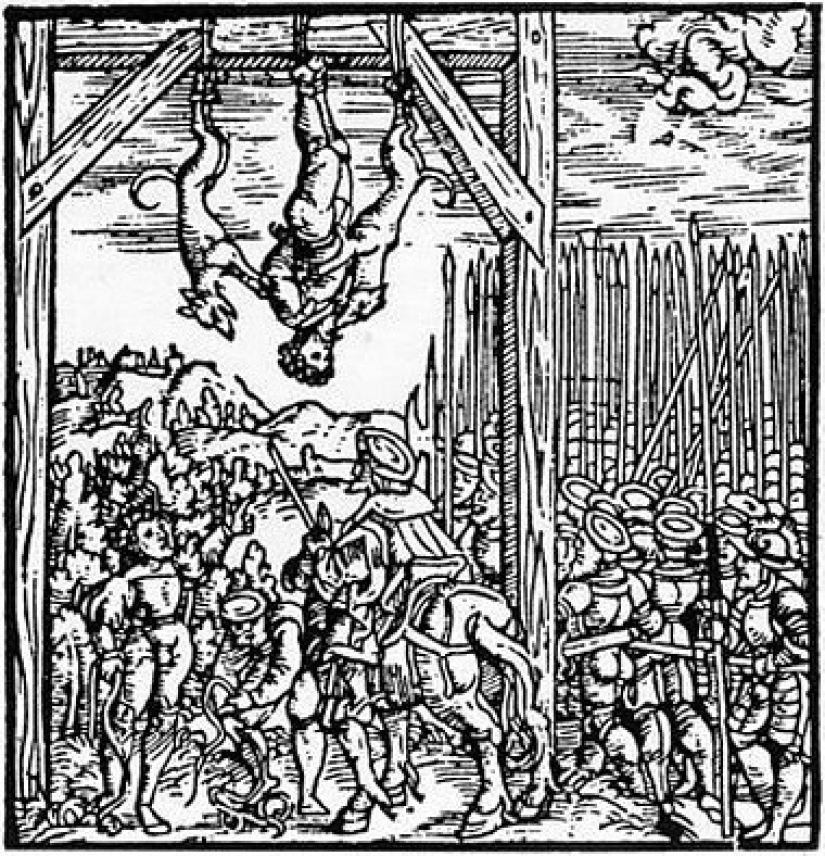
In addition, a version of the execution that was closer to the "original" also existed here for a long time. Among the differences: there was no rooster in the bag, the monkey was replaced with a cat, and the snake was depicted on a piece of paper. the fabrics from which the bags were made were also different. If the original version of poena cullei used leather, then in Germany it was sewn from linen. Thus, the person died not from suffocation, but from drowning, which, theoretically, reduced his suffering.
In ancient Egypt, special execution rituals were performed, they were partially described by the 19th-century historian Theodor Mommsen. First, the criminal was beaten with a whip or virgae sanguinae (rods painted red), then a wolfskin bag was put on his head so that the criminal could not see the sky before his death. After that, wooden shoes were put on his feet, a person was placed in a bag made of ox skin with many animals, put the bag on a cart pulled by black oxen, and drove it to the sea, where they then dumped the bag and those who were in it.
The last case of the use of poena cullei was recorded in 1734 in Saxony. It is believed that the "execution in a bag" was later carried out again in the Saxon city of Zittau, around 1749. Once upon a time, similar punishments were used here: victims were placed in a black bag along with snakes and kept under water for at least six hours. The choir was singing psalms at this time.
Officially, poena cullei was abolished in a rescript dated June 17, 1761. No one else remembered about this punishment.
It is worth noting that although poena cullei is a harsh execution, it is far from the most cruel in the history of mankind. Much more terrible was the Bull of Phalaris (also the copper or Sicilian bull) – an instrument of execution created by the Greeks by order of the tyrant Phalaris.
Keywords: Death | History | Murder | Peace | Execution | Punishment | Torture | Death penalty | Ancient world | Romans | Longrides
Post News ArticleRecent articles

Treasures are all associated with pirates, robbers and the affairs of bygone days. You will be surprised, but countless treasures ...

It seems that Russia has always been the leader in diamond mining, because there are very few countries in the world that could ...
Related articles

History keeps a lot of interesting pictures of people, events, places that somehow stood out and were remembered. In this ...

Agree, after all, people who have crossed the threshold of youth usually become famous throughout the country or the world. And ...

McDonald's is known to all as a family brand and its restaurants are associated, primarily, with the happy faces of children. But ...

If you have not yet decided what kind of tattoo you want to do, pay attention to these options with the works of the Austrian ...